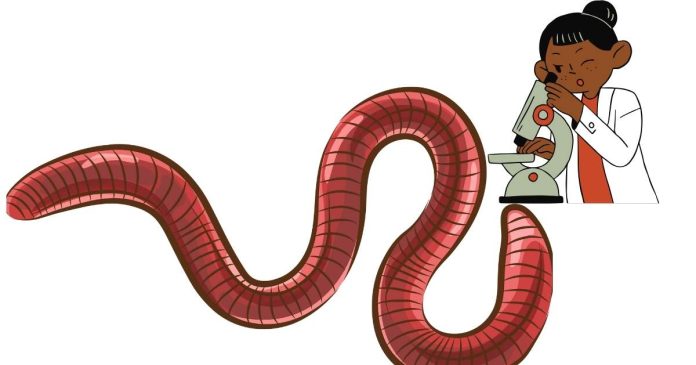When most people think about worms, they imagine their elongated, segmented bodies slithering through soil, but few consider the intricacies of a worm’s anatomy—especially its mouth. Despite their simplicity, worms possess fascinating adaptations that allow them to thrive in their environments. Here’s a closer look at what a worm’s mouth looks like and how it functions.
Anatomy of a Worm’s Mouth
The appearance of a worm’s mouth varies depending on the species. Let’s focus on the most commonly known group: earthworms.
- Earthworm Mouth (Lumbricus terrestris):
- Located at the front end of the worm’s body, the mouth appears as a small opening called the prostomium, situated just below a lobe-like structure at the tip of the worm’s head.
- The prostomium acts as a sensory organ and helps the worm feel its way through soil. It also assists in guiding food into the mouth.
- The mouth itself lacks teeth or jaws. Instead, earthworms use muscular contractions to pull organic matter, such as decaying leaves and soil, into their digestive system.
- Leeches and Predatory Worms:
- Some worms, like leeches (which are technically annelids like earthworms), have a circular mouth with rows of tiny teeth or suckers. These structures allow them to latch onto hosts and consume blood or other nutrients.
- Flatworms:
- Flatworms, such as planarians, have a mouth located on their underside, often in the middle of their body. They use a tube-like pharynx to suck in food.
How a Worm’s Mouth Works
Worms don’t chew food as humans do. Instead, their mouths are designed to break down organic material and soil for digestion. Here’s how it works:
- Ingestion:
Earthworms use their mouth to ingest organic matter mixed with soil. Their powerful pharynx helps suck in food. - Grinding:
While the mouth lacks teeth, the worm’s gizzard (a muscular part of its digestive system) grinds the ingested material with the help of small soil particles. - Digestive Efficiency:
Nutrients from the digested organic material are absorbed in the intestine, and the rest is excreted as nutrient-rich castings.
Adaptations Across Worm Species
- Marine Worms:
Polychaete worms, which live in the ocean, often have specialized mouths with jaws or proboscises. These structures allow them to capture prey or burrow into sediment. - Predatory Worms:
Some species of predatory worms have mouths equipped with teeth or hooks to grasp and consume smaller animals. - Blood-Sucking Worms:
Leeches, as mentioned earlier, have circular mouths lined with teeth for cutting into their host’s skin.
Why Is a Worm’s Mouth Important?
The worm’s mouth is a vital adaptation for its role in the ecosystem. Earthworms, for instance, are nature’s recyclers, consuming organic material and soil and enriching it with their nutrient-packed waste. Their simple yet efficient mouths allow them to process large amounts of material, improving soil fertility and aeration.
A worm’s mouth may not be as visually striking as that of other animals, but it is perfectly adapted to its function. Whether it’s the humble earthworm pulling in soil, the marine worm grasping prey, or the leech latching onto a host, these creatures’ mouths are vital to their survival and the roles they play in their ecosystems. Next time you spot a worm, take a moment to appreciate the tiny but incredible mechanics at work.



